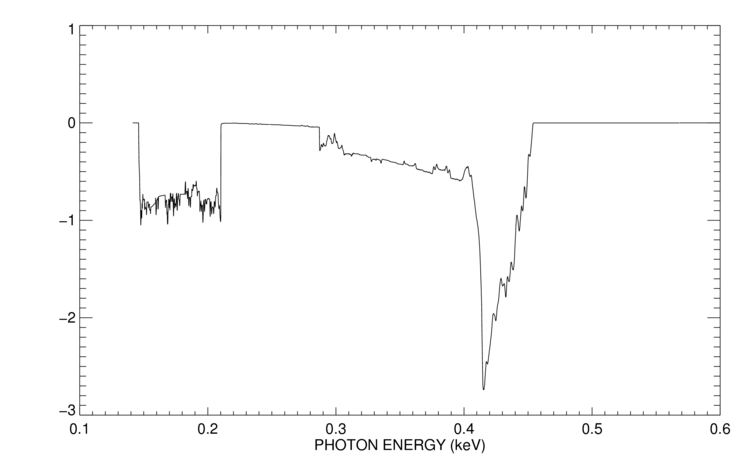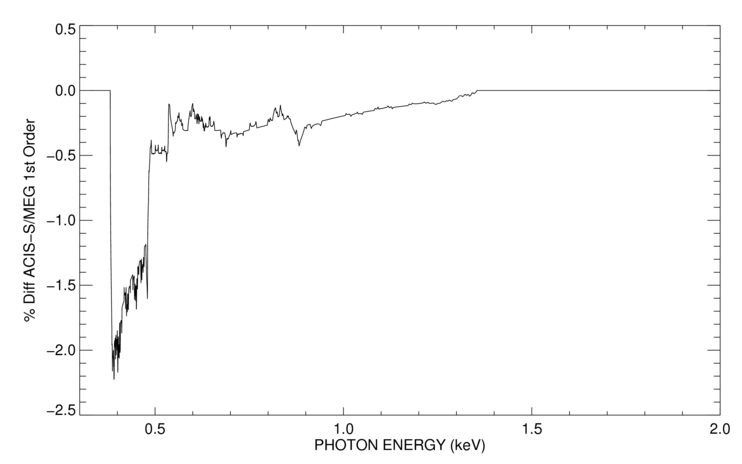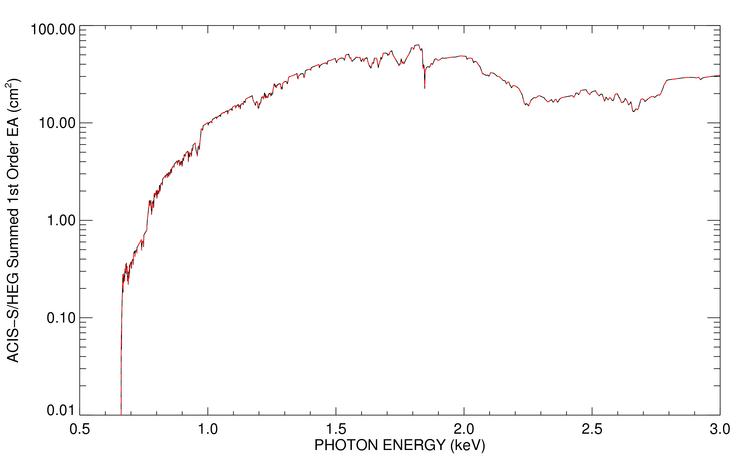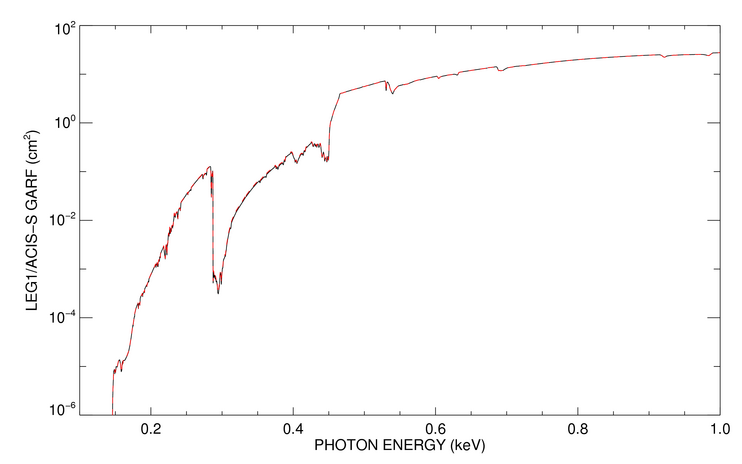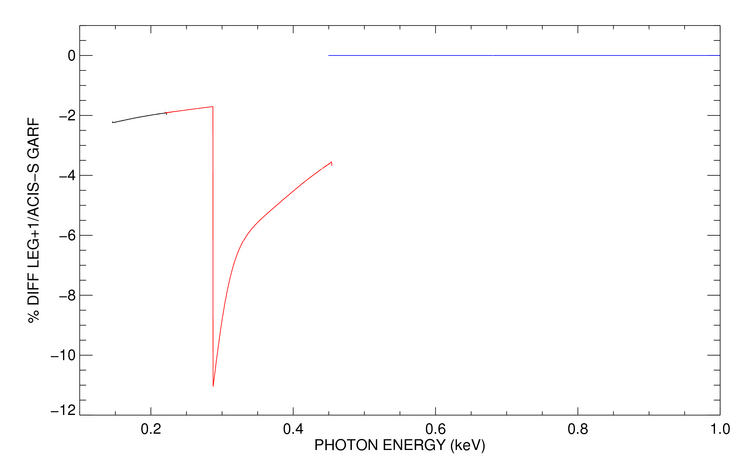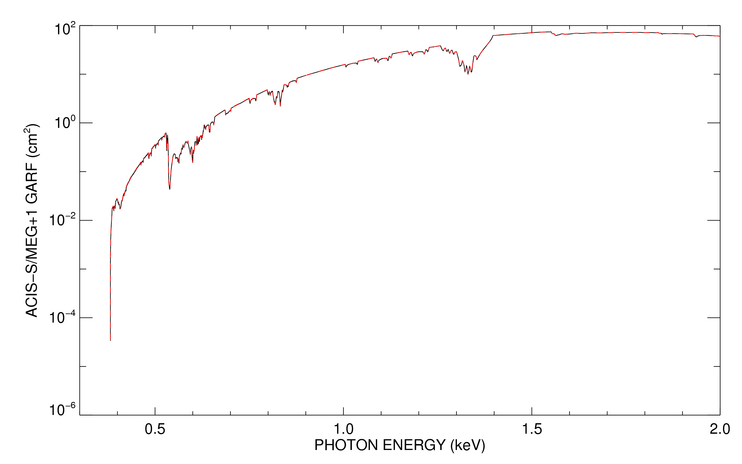CalDB 4.4.2 Public Release Notes
Public Release Date: 01 MAR 2011
SDP Installation Date: N/A
I. INTRODUCTION
CalDB 4.4.2 is an patch to the Chandra CalDB, which includes the following items:
- A correction to the ACIS branch index file to include ACIS CONTAM N0006 listings for ACIS-8 and ACIS-9. This prevents an ARDLIB initialization error for observations taken since 2011-01-01T00:00:00 (UTC).
For the CIAO 4.3 / CalDB 4.4.2 release notes see How CIAO 4.3 and CalDB 4.4.2 Affect Your Analysis
II. SUMMARY OF CHANGES
A. Correction to ACIS Index file for ACIS CONTAM v6
| Location: | $CALDB/data/chandra/acis/contam/ |
| Filename: | acisD1999-08-13contamN0006.fits |
An error in the CalDB ACIS branch index listing for the above CONTAM N0006 file has been detected, and fixed in this patch of CalDB. The CONTAM file has ten BINTABLE extensions, one for each ACIS chip, and each is selectable by the chip number, or CCD_ID, ranging from zero to 9. The listings for ACIS-8 and -9 were mistakenly omitted from the CalDB 4.4.1 release, due to missing header keywords in the file. This has been rectified.
See the ACIS QE Contamination Why? Page for more information. Technical details concerning the new CalDB data file are given in the section below.
PIPELINES/TOOLS AFFECTED:
CIAO 4.3 (with ACIS-related data only): mkarf, mkwarf, fullgarf, mkinstmap
THREADS AFFECTED:
Only procedures relevant to the chips ACIS-8 (S4) and ACIS-9
(S5) are affected by this correction. The affect is to get ARDLIB
to find the contam version N0006 file above for those two
chips. The following threads may be relevant:
Using specextract to
Extract ACIS Spectra and Response Files for Extended
Sources
Using psextract to Extract
ACIS Spectra and Response Files for Pointlike
Sources
Weighting
ARFs and RMFs
Step-by-Step Guide to
Creating ACIS Spectra for Pointlike Sources
HETG/ACIS-S Grating
ARFs
LETG/ACIS-S Grating
ARFs
Object-centered Aspect
Solution and Exposure Map
III. TECHNICAL DETAILS
A. Correction to ACIS Index file for ACIS CONTAM v6
The partial listing of the CONTAM N0006 file listing in the index in CalDB 4.4.1 creates a variety of minor issues that are solved by implementing the 4.4.2 patch. There are several avenues of affect that this mistake may have had, most of them harmless, but all will be dealt with here. On the one hand, there are users analyzing ACIS data with CIAO, on the other there are the PIMMS CY13 effective areas and proposal planning Grating ARFs (positive orders only).
Beginning with users, those analyzing ACIS-S/grating data, or ACIS-S4 imaging data for observations taken before the first of the year have nothing to be concerned about. The ARDLIB will select the CONTAM N0006 file for ACIS-4, -5, -6, and -7 automatically, and will select CONTAM N0005 for ACIS-8 and -9 automatically. For observations taken before 2011-01-01T00:00:00, the numerical effect on ARFs or GARFs with ACIS-8 is precisely zero. ACIS-S contamination corrections with CONTAM N0005 and N0006 are identical from launch date until that date.
For users analyzing ACIS-S data taken since the first of 2011, they need to install the CalDB 4.2.2 patch. Without it, an error will occur when computing GARFs or ARFs including ACIS-8 or -9, which will prevent them from completing the ARF calculation. The error that will occur is an ARDLIB initialization error, indicating the CONTAM file cannot be found. This happens because the N0006 listings for ACIS-8 and -9 are absent from the index, and the N0005 CONTAM file has been marked invalid after the first of 2011. Users of the script fullgarf are most likely to see this error.
Now, with respect to the PIMMS effective areas, the problem that occured due to the indexing mistake was more subtle, in that the model OBS_IDs used for ACIS-S/Grating first order effective areas (EAs) are dated before year 2011. So, the obvious error did not occur, and the N0005 CONTAM extensions for ACIS-8 and -9 were selected automatically. However, an additional TIME-delay qualifier is specified in the PIMMS process, to project the contamination correction estimate out into the future, which for CY13 was the date 2012-05-15T00:00:00 (TT=453427266.184 s).
It happens that CONTAM N0005 and N0006 begin to deviate after the precise date 2011-01-13T18:47:30 (TT=411331716.184 s). Furthermore, the prediction from CONTAM N0005 becomes flat after this date, while N0006 properly adds more contaminant correction. The resulting difference in the predicted contamination correction factor is given in Fig. 1 below, by the green trace. The sense of the difference plot is that N0006 predicts deeper and deeper absorption (flux loss) due to the contaminant. Using N0005 would then tend to overestimate the net effective area on ACIS-8 and -9.
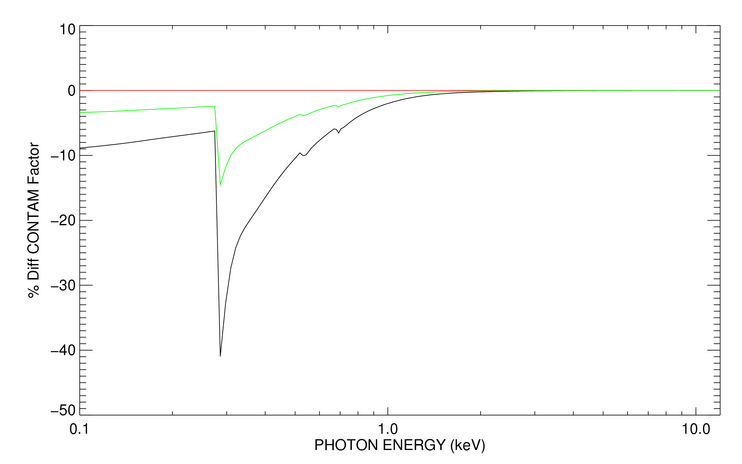
For PIMMS CY13, only the first-order Grating EA's with ACIS-S are affected by the indexing mistake. The resulting error in the EAs is mitigated by the fact that we sum the positive and negative orders. The effect is maximal (from Fig. 1) at the Carbon-K edge (283 eV) which falls off the ends of the ACIS-S/HETG grating patterns, and sits on the ACIS-5 and -8 chips for ACIS-S/LETG. ACIS-5 is a BI chip, and so has a much larger QE at 283 eV than does ACIS-8. This swamps the error at 283 eV to less than 3% of the EA at that energy. For ACIS-S/MEG and ACIS-S/HEG first orders, the error is respectively smaller and smaller, but occurs mostly at the low-end of the EA spectrum, as the C-K edge location recedes further and further off the end of ACIS-9. Figure 2 a-f below gives the overlay plots and the difference plots for the several affected cases.
Regarding the Proposal Planning Grating ARFs, published and described here, the orders are not summed as with PIMMS, and hence the postive order files including ACIS-8 and -9 in their configurations will be affected more strongly. Figures 3 a-h below give the overlay and difference plots for the +1 orders only for ACIS-S/LEG, MEG, and HEG, respectively. The higher orders are less affected, again due to the C-K edge receding from the ACIS-S chip array.
In view of the relatively restricted regions where the resulting errors are greater than 5%, and the late hour of the proposal cycle at which this problem was discovered, the CXC has elected not to correct the proposal planning GARFs or the PIMMS effective areas due to the CONTAM indexing problem. The small over-estimates of the counting rates or efficiencies measured should not be expected to affect any proposal feasibility study or count rate estimate.
Users analyzing the newest obervations taken since the beginning of year 2011 are strongly encouraged to install or have installed at their site the new CalDB 4.4.2 patch to eliminate this ACIS CONTAM N0006 file selection error in ARDLIB (CIAO 4.3).

